That was then, this is now: A walk thru Sebastopol history with Donna Pittman
A quick stroll through the last hundred years of history in south Sebastopol
By Elsie Lennox
At the end of August, you may have noticed a large group of people walking south from downtown Sebastopol. This was the Sebastopol History Walk, hosted by West County Museum Director Donna Pittman. The walk was part of the monthly Sebastopol Walks series.
The walk’s theme was “That was Then, this is Now,” and Pittman led the group through Sebastopol’s past and present in a walk that stretched from the downtown plaza to Fircrest Market. Walkers got to experience Sebastopol through the decades, with enlarged historical photos of the town and anecdotes from Pittman and others who had grown up here.
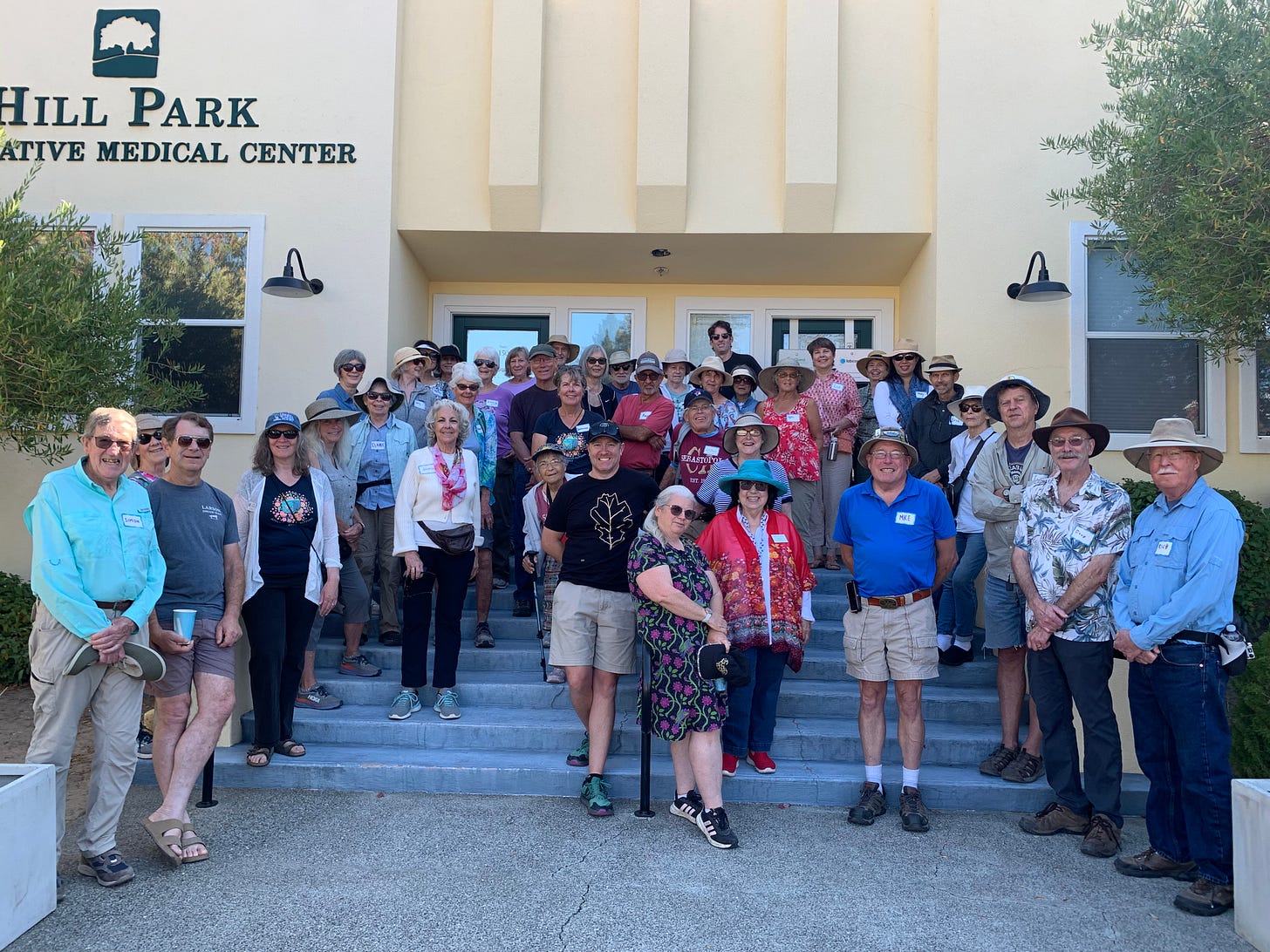
At the beginning of the walk, Pittman warned participants, “I tend to talk a lot as I get excited, because I was a history teacher, and I always want to make it a living history thing.”
Main Street at Bodega Avenue
The first stop on the walking tour was the corner of South Main Street and Sebastopol Avenue, where we looked back in time to the development of the heart of Sebastopol.
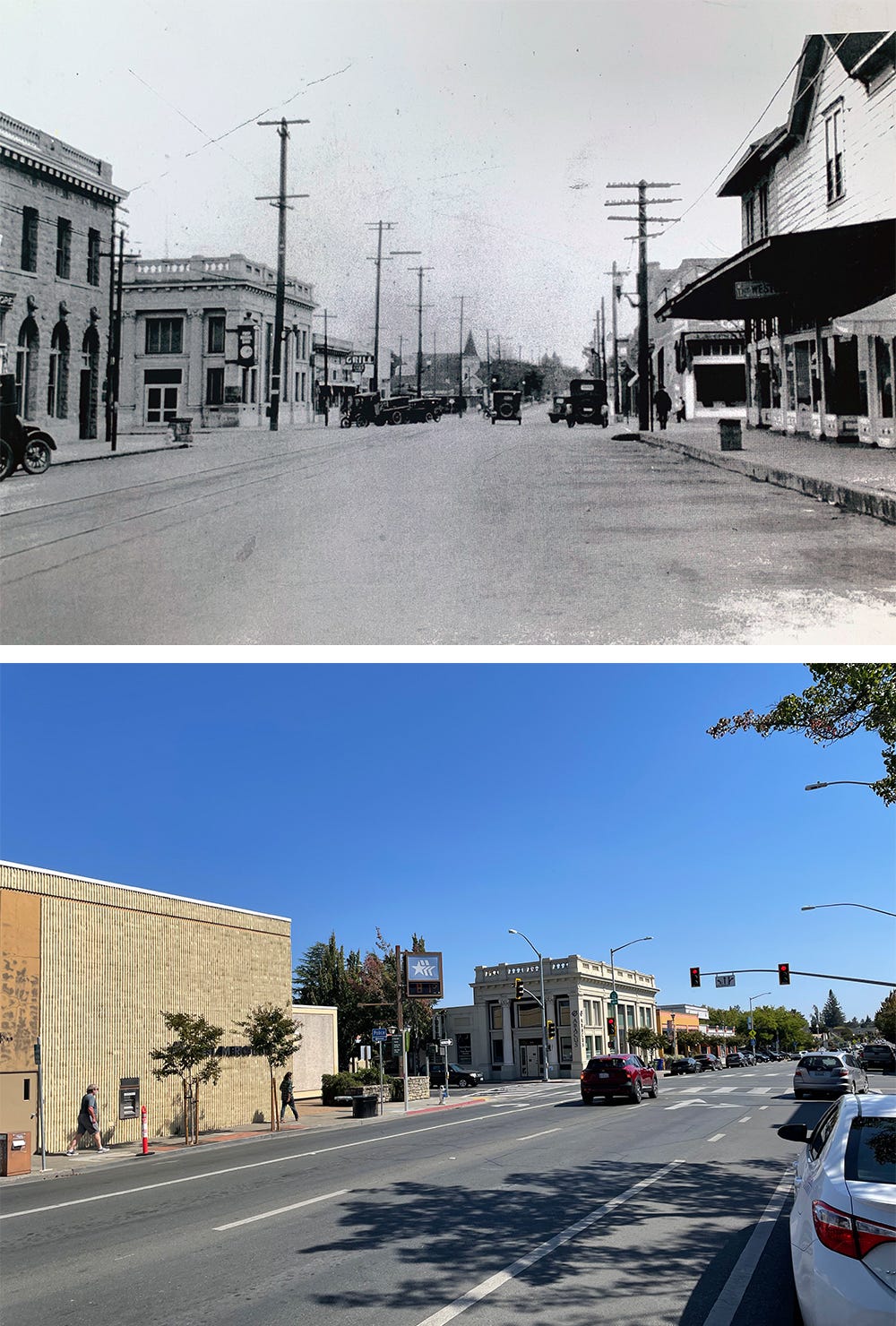
“Now, I’m calling this my Gilded Age,” Pittman said. “Between about 1906 and 1925, we got the Carnegie Library and the First National Bank.”
She said the arrival of the First National Bank, now Abacus Wealth Management, was a big deal back then, a real turning point and a sign the town was thriving. In fact, she said the during this time, the Press Democrat called Sebastopol “the fastest-growing and most prosperous place in Sonoma County.”
Sebastopol’s First Bank, The Bank of Sebastopol, was built in 1892. According to Pittman, it’s the only brick building in town from that early period.
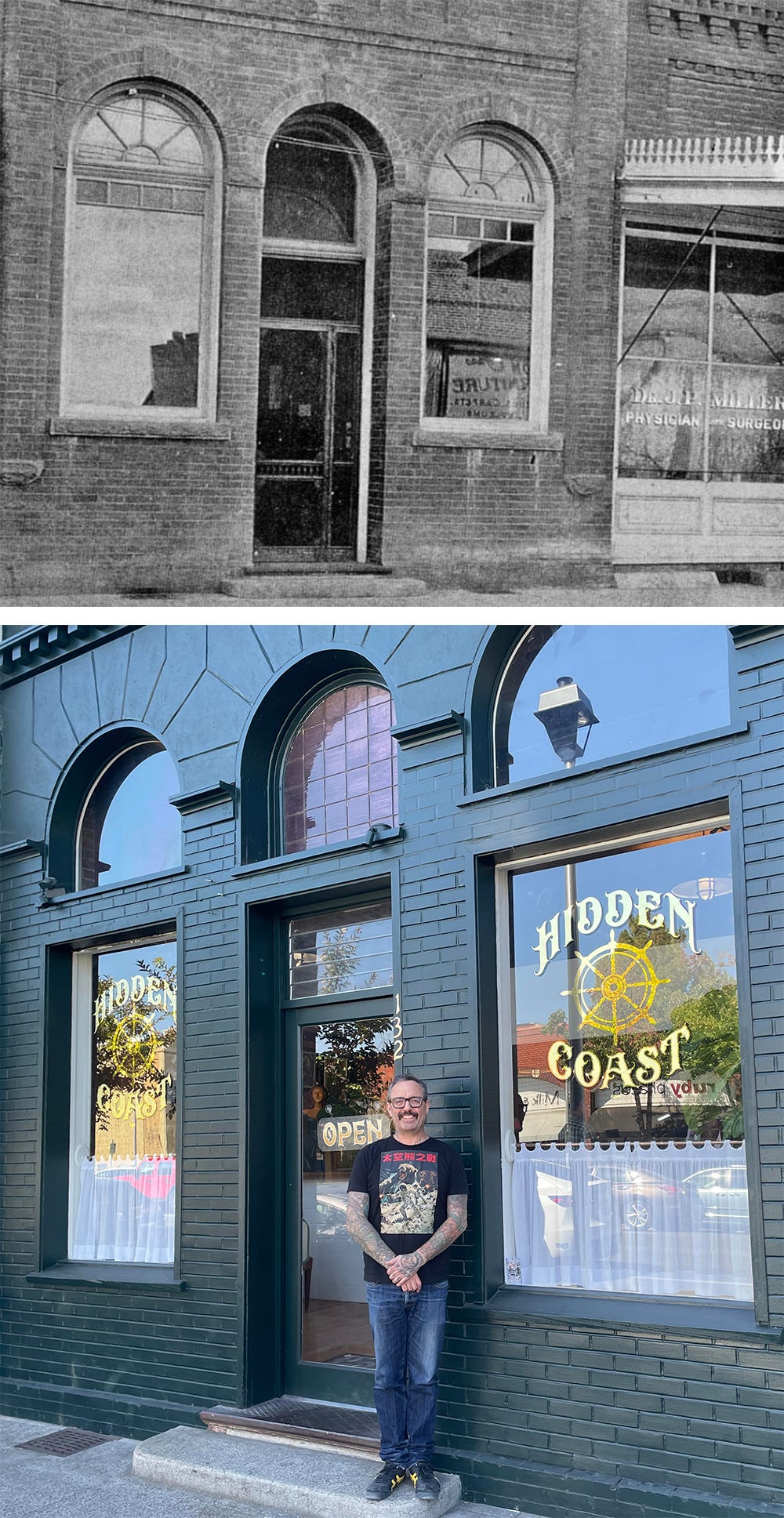
Pittman also added a personal touch to this stop, sharing memories from her childhood with the walkers. “We used to come down in our car, and I would tell my parents I live in the little Hollywood because the lights were so bright,” she said.
At South Main Street and Burnett
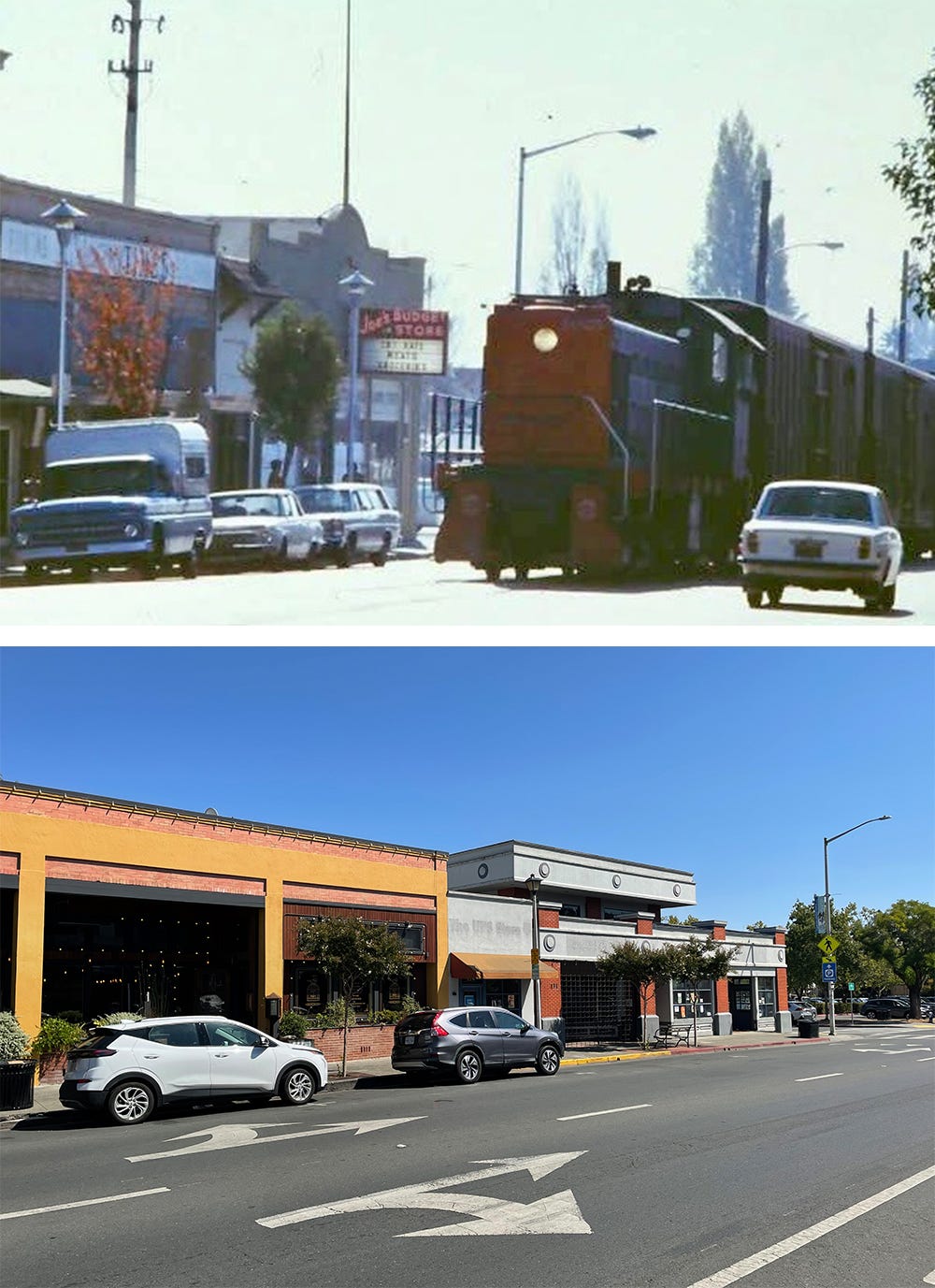
At the corner of South Main Street and Burnett, what is now the Livery used to be Joe’s Budget Store, which, interestingly enough, advertised itself as “The Poor Man’s Store.” Here’s a closer look at Joe’s storefront:
The postal annex and the vanished railway
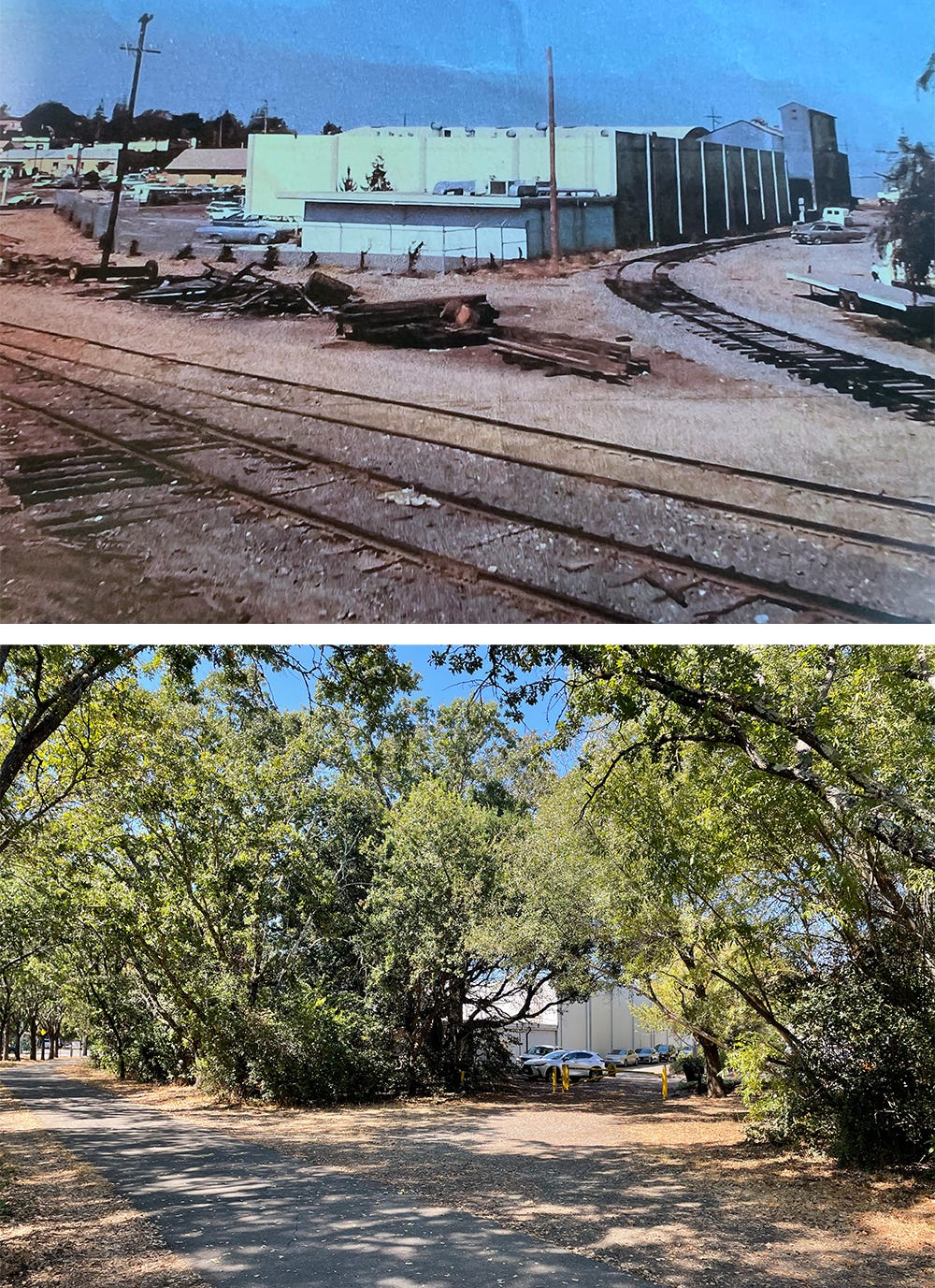
Moving on, the group approached The Feed Store, where Sebastopol local, Gavin Waters, shed light on a lesser-known chapter of Sebastopol’s past — its secret railroad history. What is now the Joe Rodota Trail used to be a rail line from Sebastopol to Santa Rosa.
As we stood behind The Feed Store, we looked to where there once had been one of many of Sebastopol’s railroad spurs and listened to Waters describe the informal system of codes used by long-ago hobos [now called “the unhoused”] who traveled the rail lines.
“So let's say they went to somebody's house in town, and, you know, they were able to steal a pie from the window,” he said, “They would mark that house with a special code so that some other could follow on. Folks could come along (mostly working-age men) and know that ‘This is a good place to get food’ or ‘I could steal something here,’ or ‘There's a man with a gun that lives in this house.’ They had a specific code for that one.”
Waters explained that this network of signs and shared knowledge was crucial to how this part of Sebastopol society functioned. Even with the more open conversations around homelessness happening now, he noted, this entire layer of social survival has mostly disappeared from public memory.
One of Sebastopol’s many apple packing plants became Southpoint Center
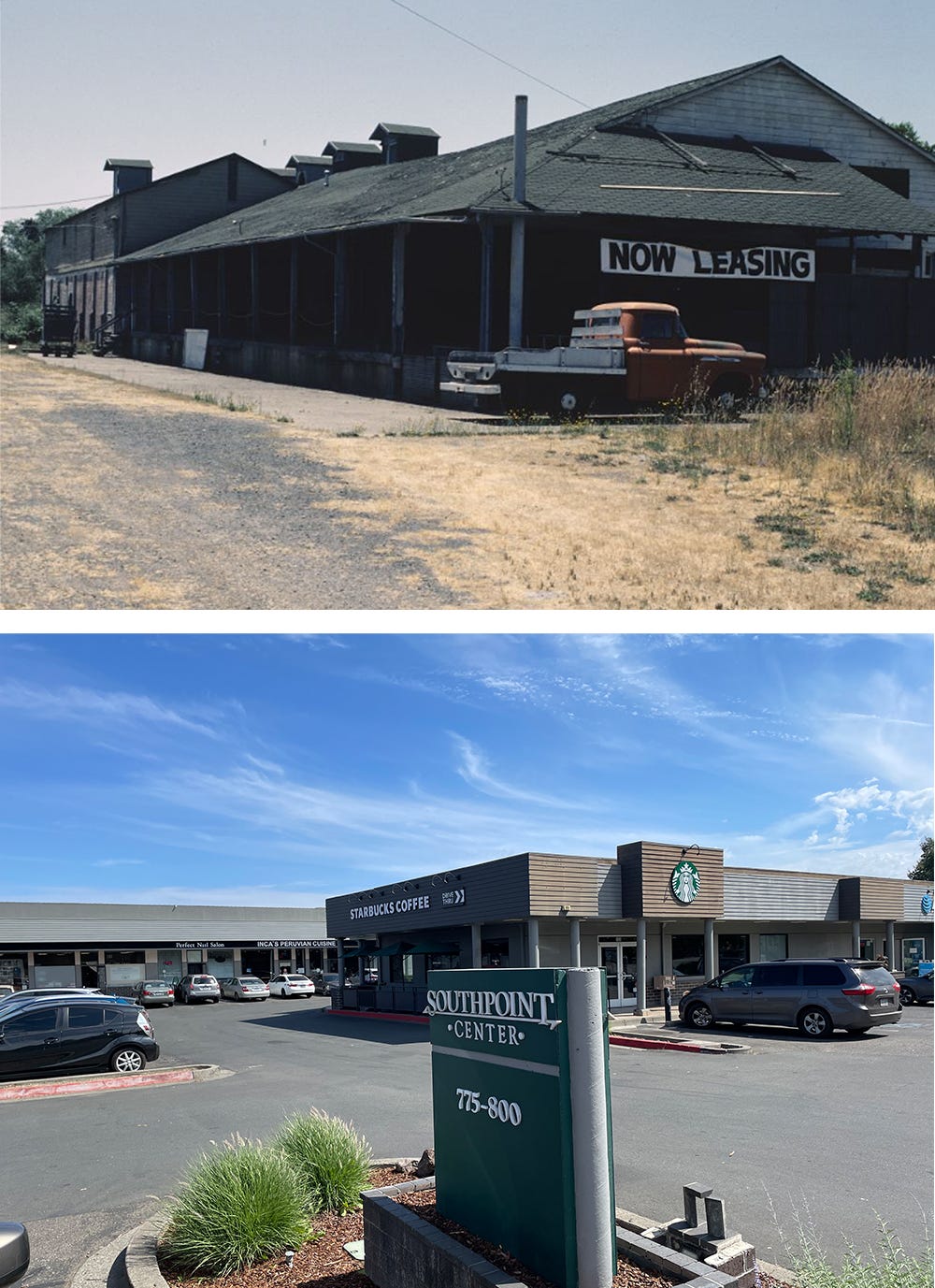
When the group reached Southpoint Center, they got a special treat: a piece of living history from Kathy Furusho-Ono, a Sebastopol native with deep family roots here, who told the group the history of the Furusho Bros. Packing House and her family’s longtime connection to the town.
Furusho-Ono explained that her grandfather came to Sonoma County around the start of Japanese immigration to the mainland and bought a property with an apple orchard. She also shared the family’s experience during World War II, when they were held at the Amache Internment Camp. During that time, her uncle served in the famous 442nd Infantry Regiment, rescuing the Lost Battalion and becoming connected to another famous Sebastopol local, Tom Barlow, who was a member of that battalion.
After the war, the family came back to Sebastopol, and the Furusho Bros. packing house really took off. Kathy recalled, “In 1957, it was not a really good financial time for apple growers at that time, and so my father and my uncle were bringing apples here. They [the packing house owners] were not able to pay them for the apples that they brought in, so they asked them, ‘Would you like to buy it?’”
The Furusho Bros. Packing Company grew quickly, and their apples — with the famous Jackie Boy stickers — showed up in grocery stores all over. The packing house and cold storage buildings are gone now, replaced by Starbucks, the Legacy and other stores and restaurants in the Southpoint Shopping Center, as well as the adjoining car wash and storage business.
From Foster’s Freeze to Handline
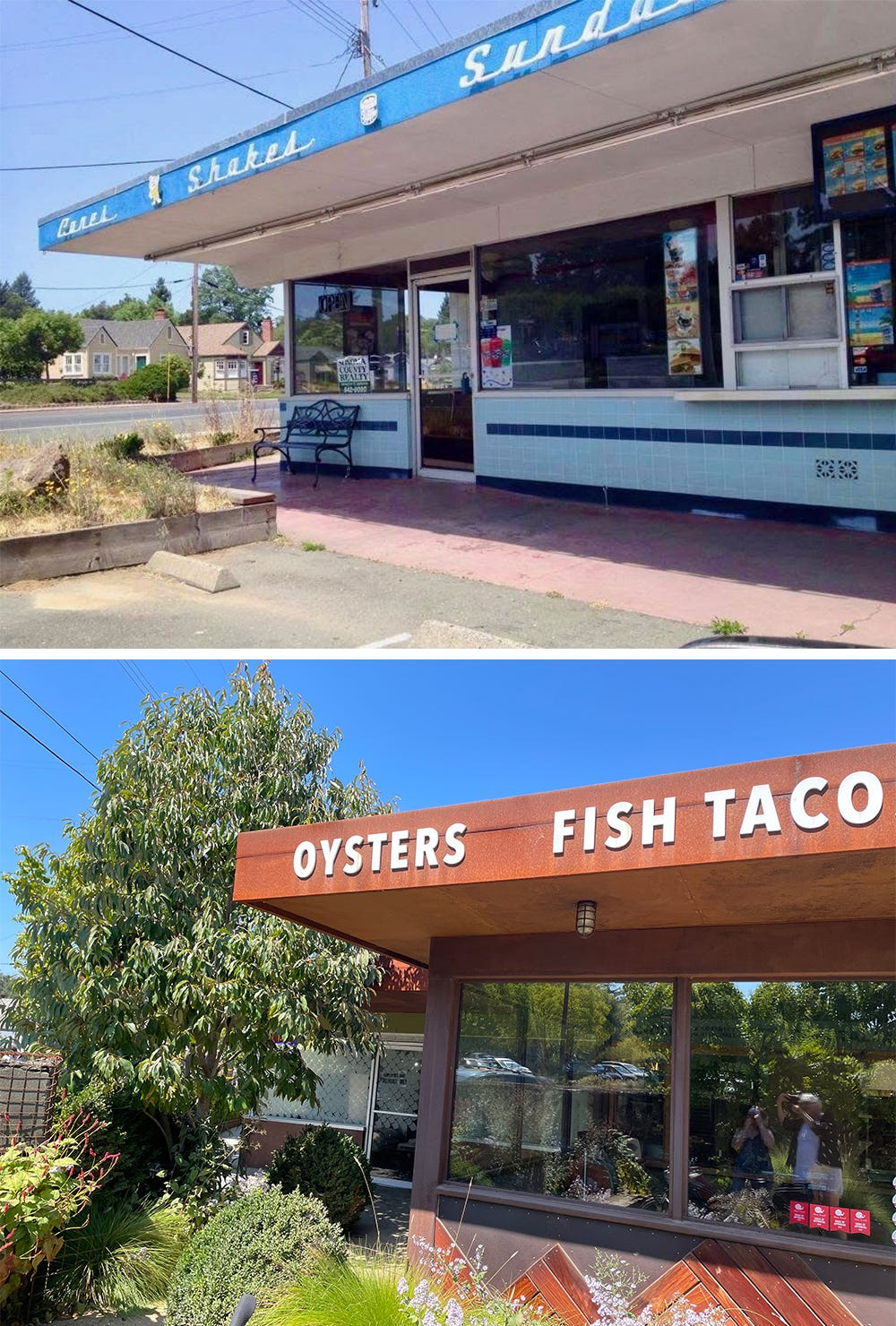
Further down Gravenstein Highway, we came to rest in the parking lot of Avid Coffee looking across the street to Handline.
“Here, Foster's, another gorgeous blue and white building, very popular,” Pittman shared. “I couldn't get a hold of the previous owner, but he used to do car shows there on the way back of his property.”
She continued, “We hardly got to eat out because you didn't eat out. It was expensive, and there were very few places.”
She also recalled that next to Handline was a Chinese restaurant called the Dugout, which was later replaced by the Golden Dragon Chinese restaurant.
From Bowling to Boba and Ballet
L&L Lanes opened in 1960. Years later it was torn down and replaced by this little shopping center, which is home to many local favorites, like Bubbles Boba, Psychic Pie, Hole in the Wall Cafe and the Sebastopol Ballet.
The Fircrest Sign
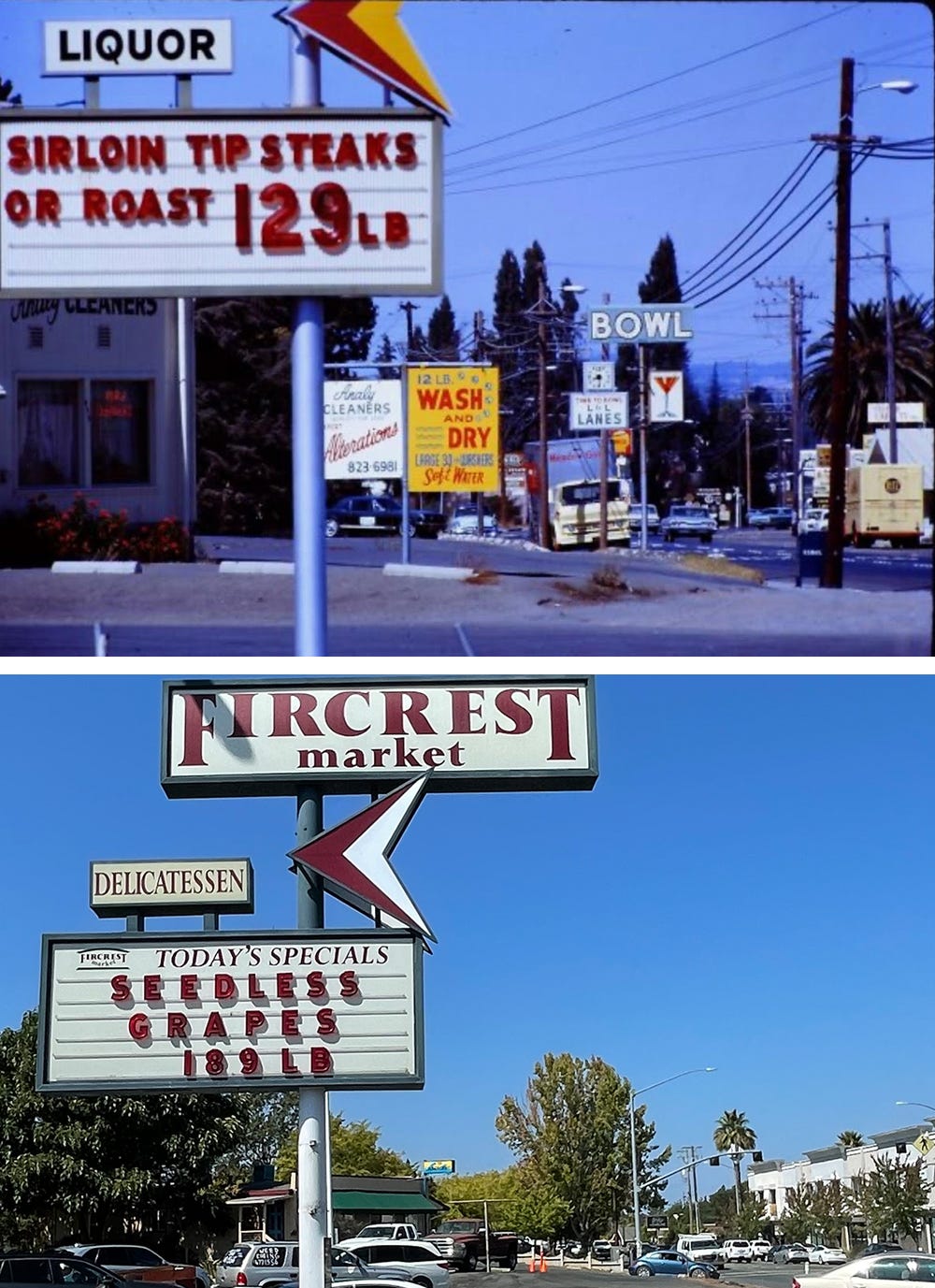
According to Pittman, Fircrest Market opened on Dec. 28, 1959. It’s been family owned ever since.
The next Sebastopol Walk happens on Sept. 27
Sebastopol Walks’ Public Art Walk
Saturday, Sept. 27, 9 am. Meet at the downtown plaza.
Starting in the plaza, we will walk, observe and enjoy public art installations in the downtown Sebastopol area. We’ll visit murals, including the historic WPA Post Office mural, “Agriculture”, and the Coyote Mural. Next, we’ll visit the recently installed Ned Kahn “Sebastopol Spire” in the Laguna and Bruce Johnson’s “Koan” on the Joe Rodota Trail. We will visit and learn about the Community Sculpture Garden in Ives Park. We will wander down Florence Avenue to see Patrick Amiot and Brigette Laurent sculptures, and then the recent Analy High School mural, “A Day of Remembrance.” We’ll see several other public art delights along the way. Leaders of the walk include Councilmembers Sandra Maurer and Phill Carter; Sebastopol Public Arts Committee (PAC), Chair Jeff Stucker; and former PAC Chairs Robert Brent and Marghe Mills-Thysen.
More Western Sonoma County Historical Society events
CEMETERY WALK. The annual Cemetery Walk is happening on Oct. 3-4. Local folks dress up as the dear departed and, at graveside, enact scenes from their lives. This event is a local favorite and tends to sell out fast, so head to Eventbrite soon if you want to grab tickets.
NEW PHOTO GALLERY AT THE MUSEUM. If you love old photos, there’s something else to look forward to this October—the West County Museum will be unveiling a brand-new photo gallery featuring over 8,000 images from the local area. It’s a great way to explore Sebastopol’s past and see how the town has changed through the years.
Elsie Lennox is our new intern here at the Sebastopol Times. She lives in west county and attends Credo High School in Rohnert Park.

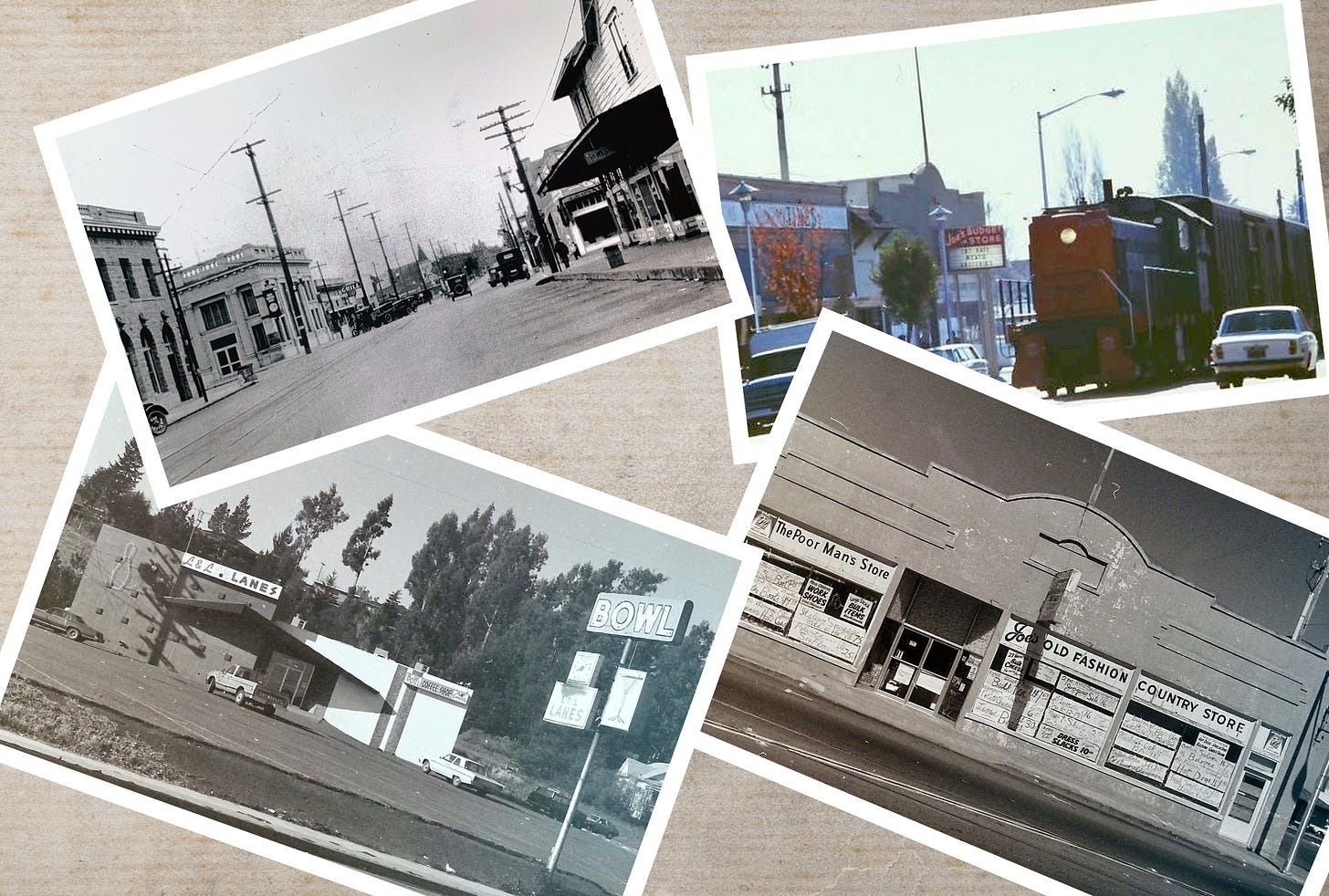
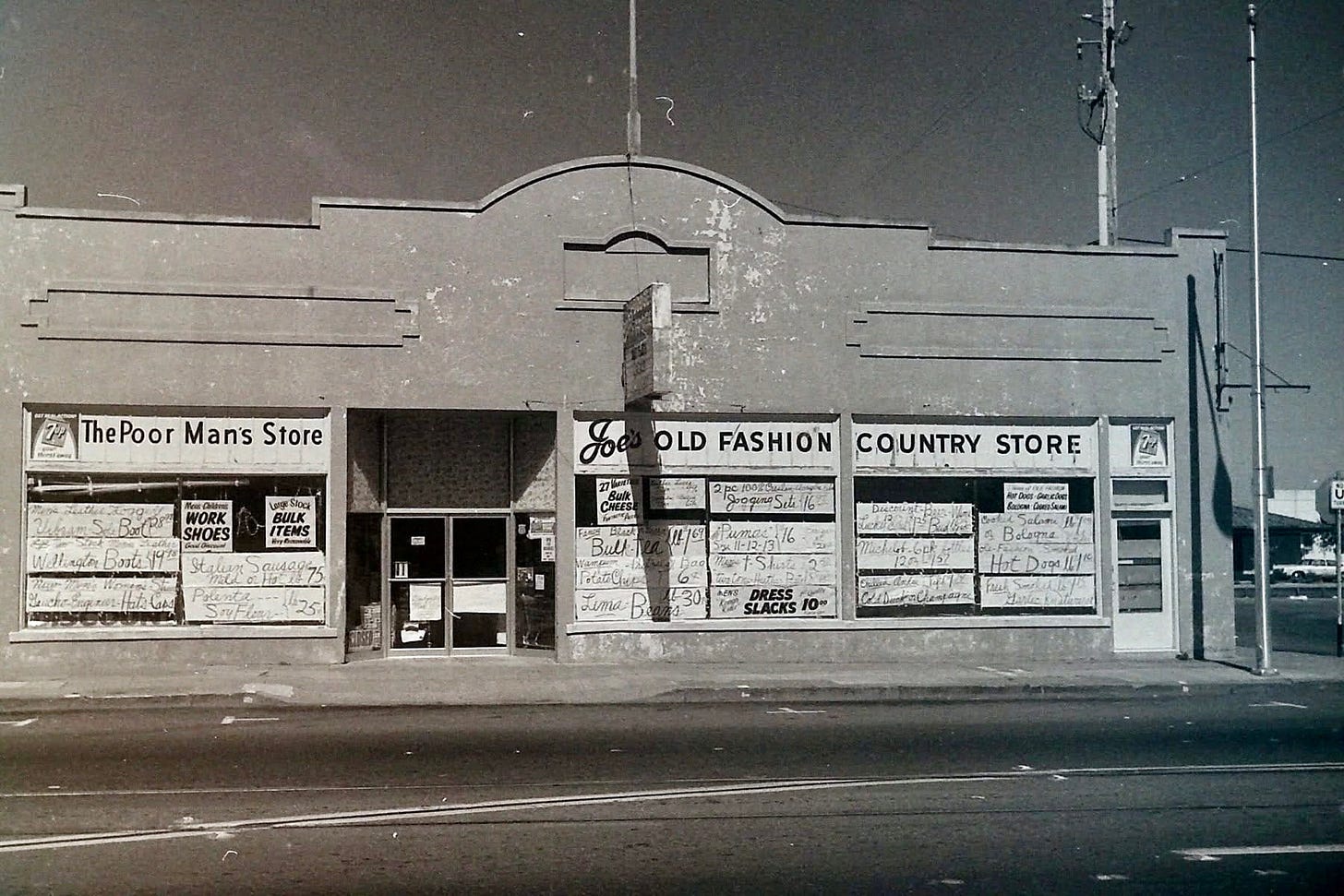

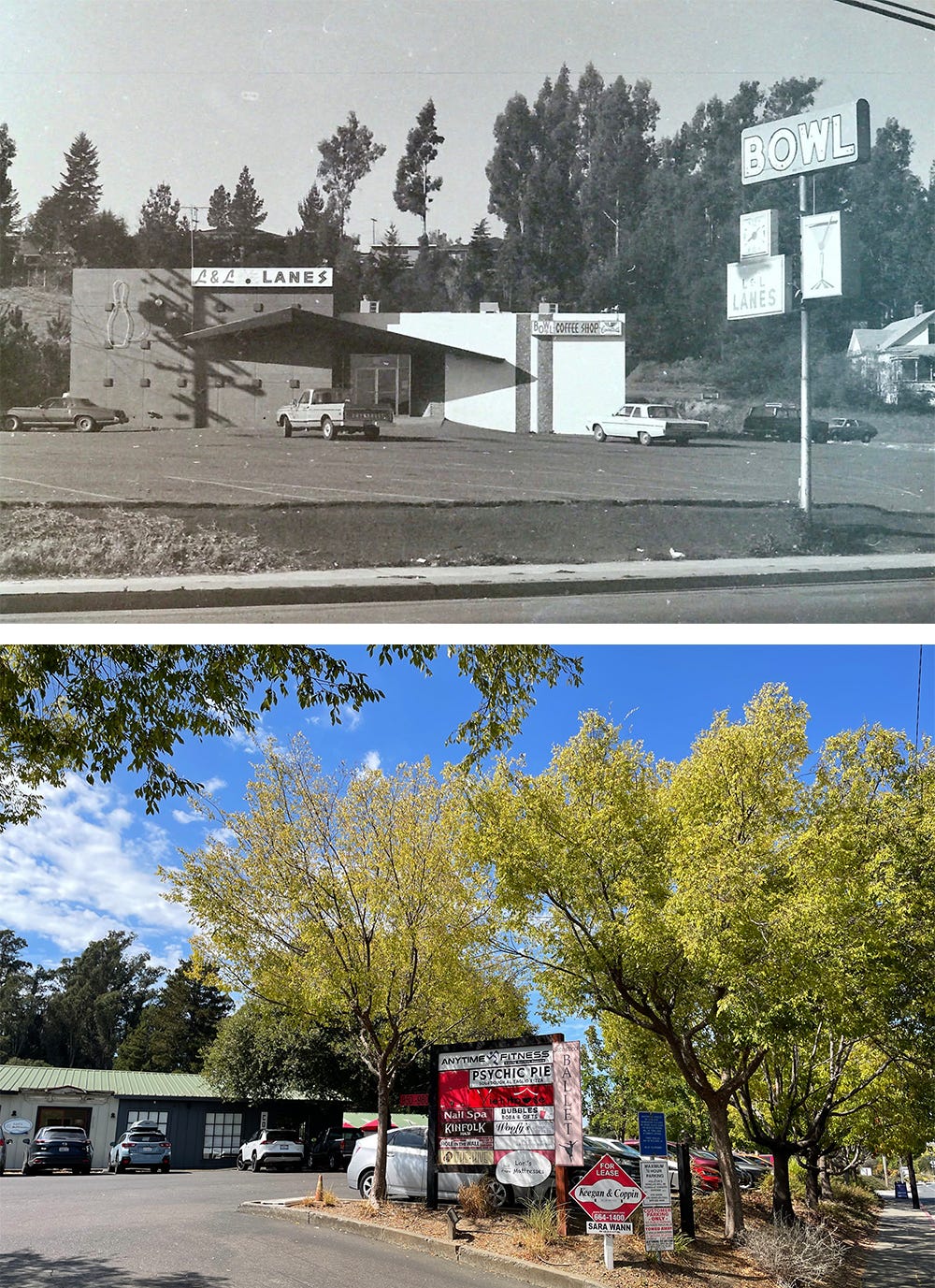
This was a very well written and laid article. Nicely done Elsie! You have a future in the news business!
I was on this walk & learned a lot. Thank you Elsie for your great job reporting. I can now remember and review what we saw.
I’m hopeful that you will also report on the upcoming Art Walk. I have to miss it due to being out of town that day. I know it will be another great walk.
Again, wonderful reporting Elsie!